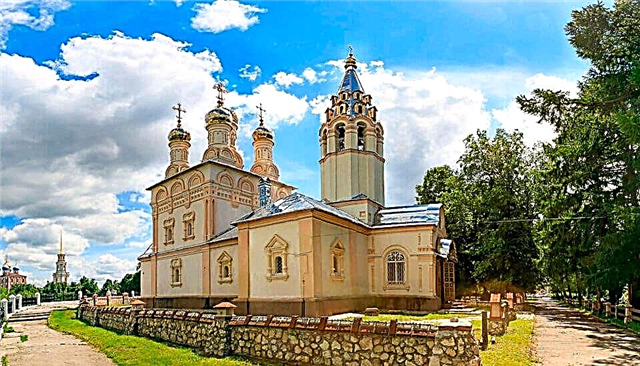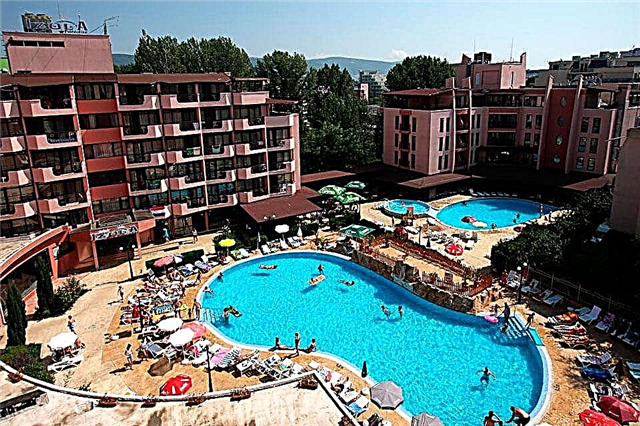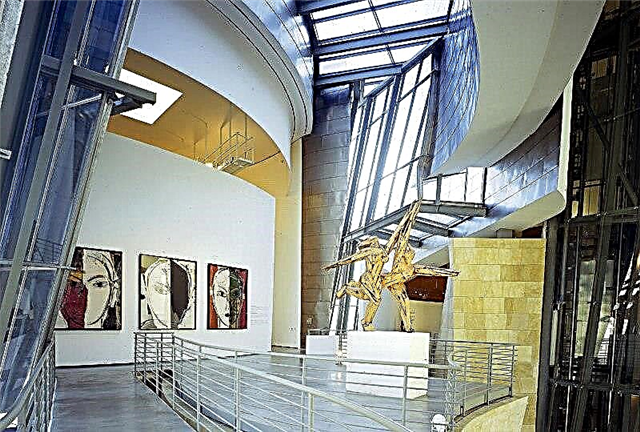Each era is characterized by some new direction in art, architecture, painting, leaving behind unique monuments-masterpieces in the form of art canvases, musical works, unique buildings. Such a masterpiece of 20th century deconstructivism architecture is the Guggenheim Museum in the Spanish city of Bilbao.

The museum bears the name of the famous American philanthropist, founder of the Museum of Modern Art in New York, who is fond of abstract art and invests in its development. Solomon Robert Guggenheim was born into a Jewish family whose head emigrated from Switzerland to America and became a successful industrialist and merchant there. The financial situation of his fourth son allowed him to acquire a large collection of abstract art and open a museum.
The Guggenheim Museum, opened in Bilbao, is essentially a branch of the New York one, but is distinguished by its unusual modernist design, designed by the architect Frank Gehry, known in America and Canada for his ultra-modern projects. The building of the museum, opened in 1997, can be called the most original embodiment of the ideas of abstractionism and deconstructivism in the architecture of the 20th century.
Museum architecture

The building, in shape far from the usual standards, outwardly resembles some kind of huge alien ship, equipped with intricate, outlandish-looking details. The museum is located on the banks of the Nervion River, reflecting in calm waters with its surreal forms and becoming even more mysterious and fantastic from this.
The central part of the building looks like a drop-down artichoke flower, and the long wings-pavilions, diverging in different directions, resemble petals. The walls covered with titanium slabs, sparkling in the sun, enhance the effect of a cosmically unearthly structure that has landed on the bank of a Spanish river. The seeming chaos of the bends of the metal sleeves has the function of "catching the light", so even in the gloomiest weather, the avant-garde building looks radiantly festive. It is just as stunningly beautiful against the background of the blue-violet evening sky and river water, mirroring the amazing forms of the unique structure.

Unusual sculptures
From the side of the river there is a pedestrian curved half-arched bridge, along which you can walk to inspect the building of the museum, come up to a huge metal sculpture of a spider with incredibly long "legs". The author of this sculpture, Louise Bourgeois, probably tried to express the idea of the role of insects on our planet, to show the dependence of a strong person on a tiny insect: the figure of a person standing next to the “paw” seems to be a small toy.
In front of the museum there is another amazing 13-meter "sculpture" of a flower puppy, made by the American artist Koons. The original figure is the best fit for the decoration of such an extraordinary building as the Gaggenheim Museum. We must pay tribute to the author of the sculpture and to the flower growers caring for the flower "coat" of the puppy. Organically selected shades create a very cute look of a giant image of a cute terrier puppy.

An admirable outdoor installation of tulips, delicately made of the finest steel, covered with shiny paint of different colors: they also seem to be from space. An abstract garland woven of glass blue-gray balls looks a mesmerizing spectacle.
Museum expositions
There are widely presented objects of abstract-modernist trends in art, located in thematic halls. In the hall of futurism and abstractionism, you can see the works of Kandinsky, Malevich, Marinetti, Boccioni, Russolo, as well as contemporary futurist artists.

In the hall of surrealism, one can get acquainted with the world masterpieces of Salvador Dali; in the hall of cubism, along with the best works of Picasso, many installations and paintings of modern cubists are presented. Interesting exhibits are the steel sculptures of the avant-garde artist Richard Sery, who embodied in them the daring ideas of technological progress, combined with the non-objective artistry of the image.
Among the traditional works that you can touch, there are a lot of all kinds of installations and paintings made in electronic form, sometimes striking the imagination with the unlimited possibilities of electronic images.

Every corner of the museum carries the idea of abstract avant-garde, expanding the boundaries of contemporary art, striving to keep pace with scientific and technological progress, which every day presents its own surprises. The halls and courtyard of the museum are never empty: thousands of tourists come here in an endless stream to see the real Miracle of modern architecture up close.
Which country is better to visit? In Italy or Spain? - our article will answer all questions.











